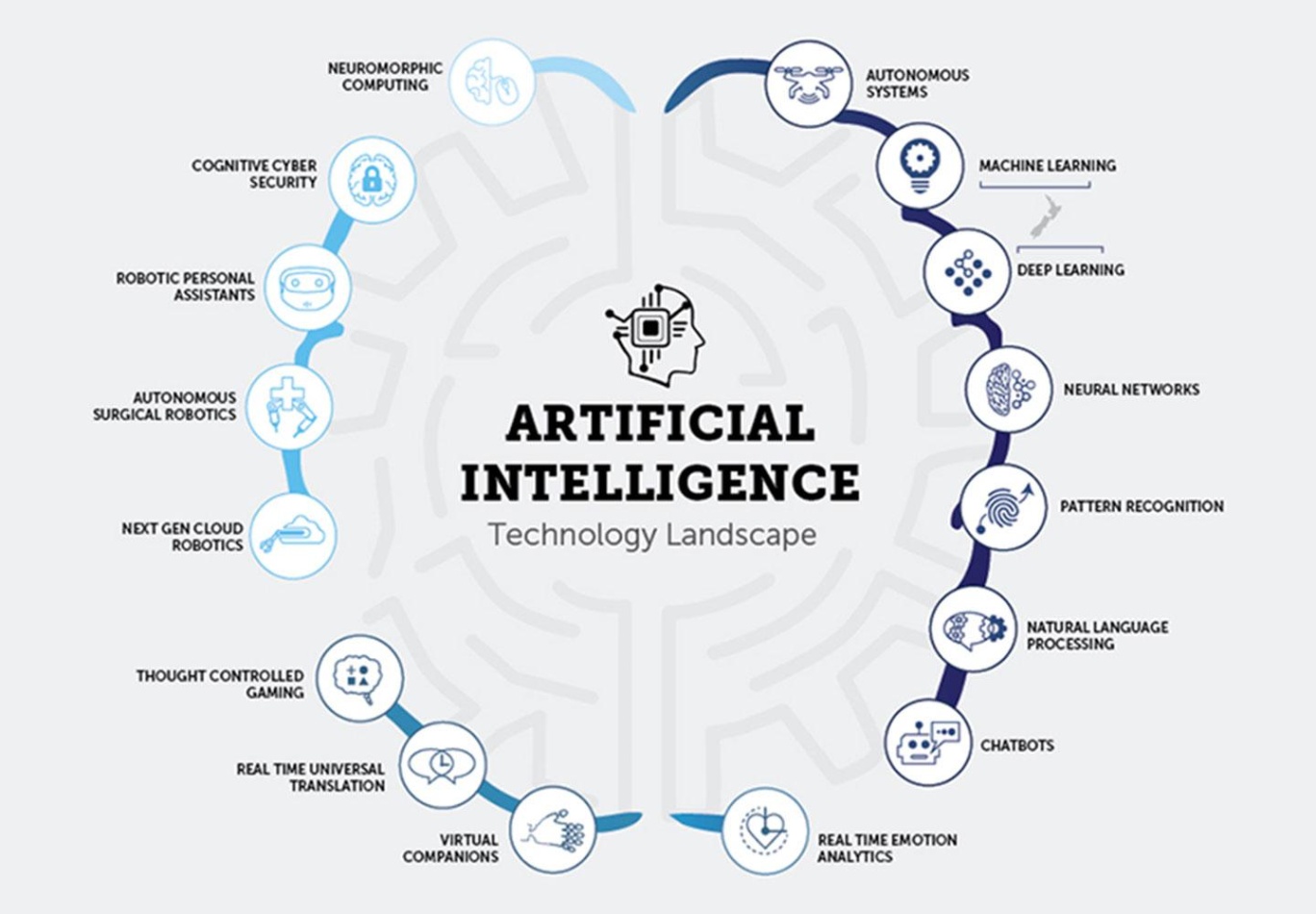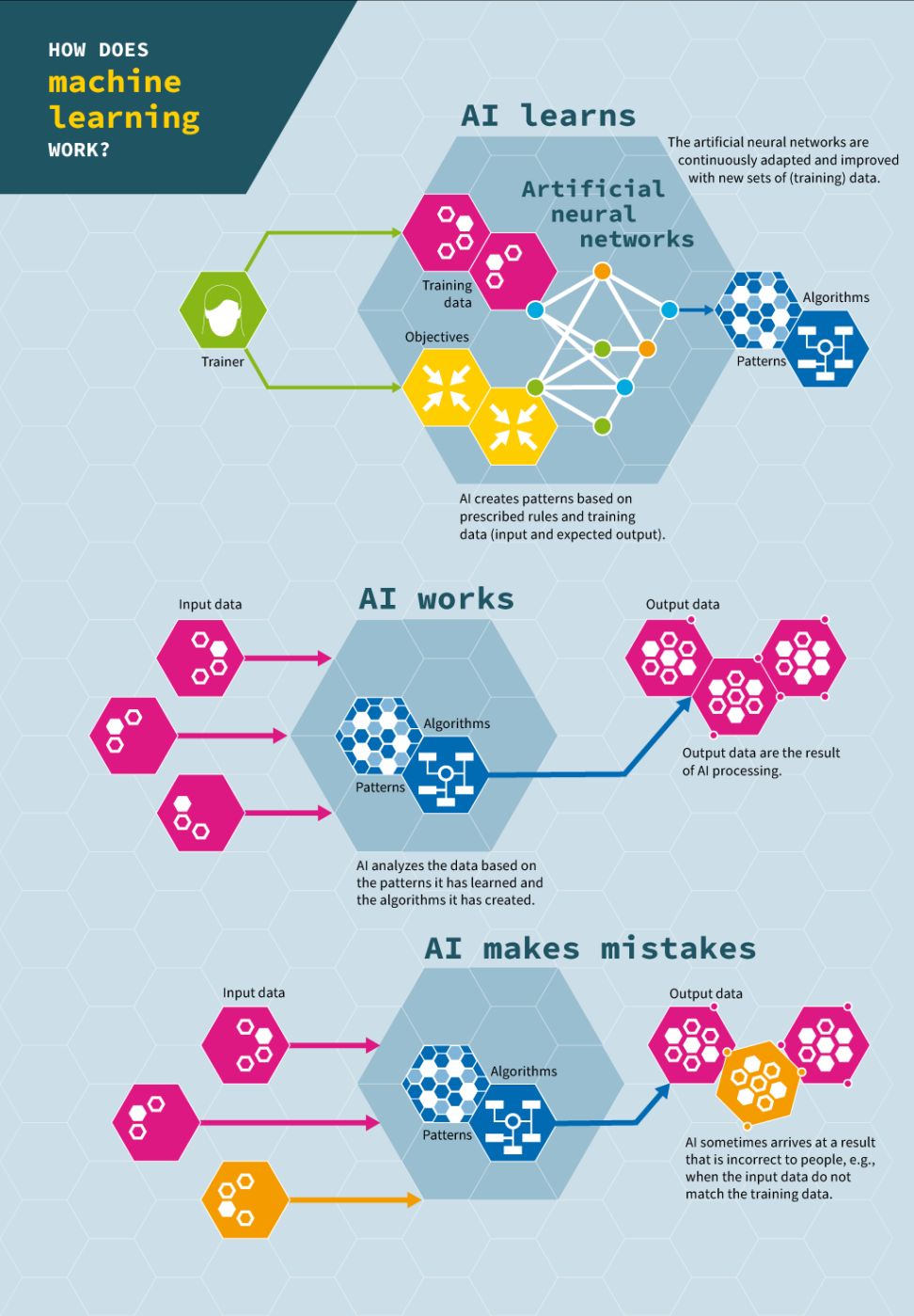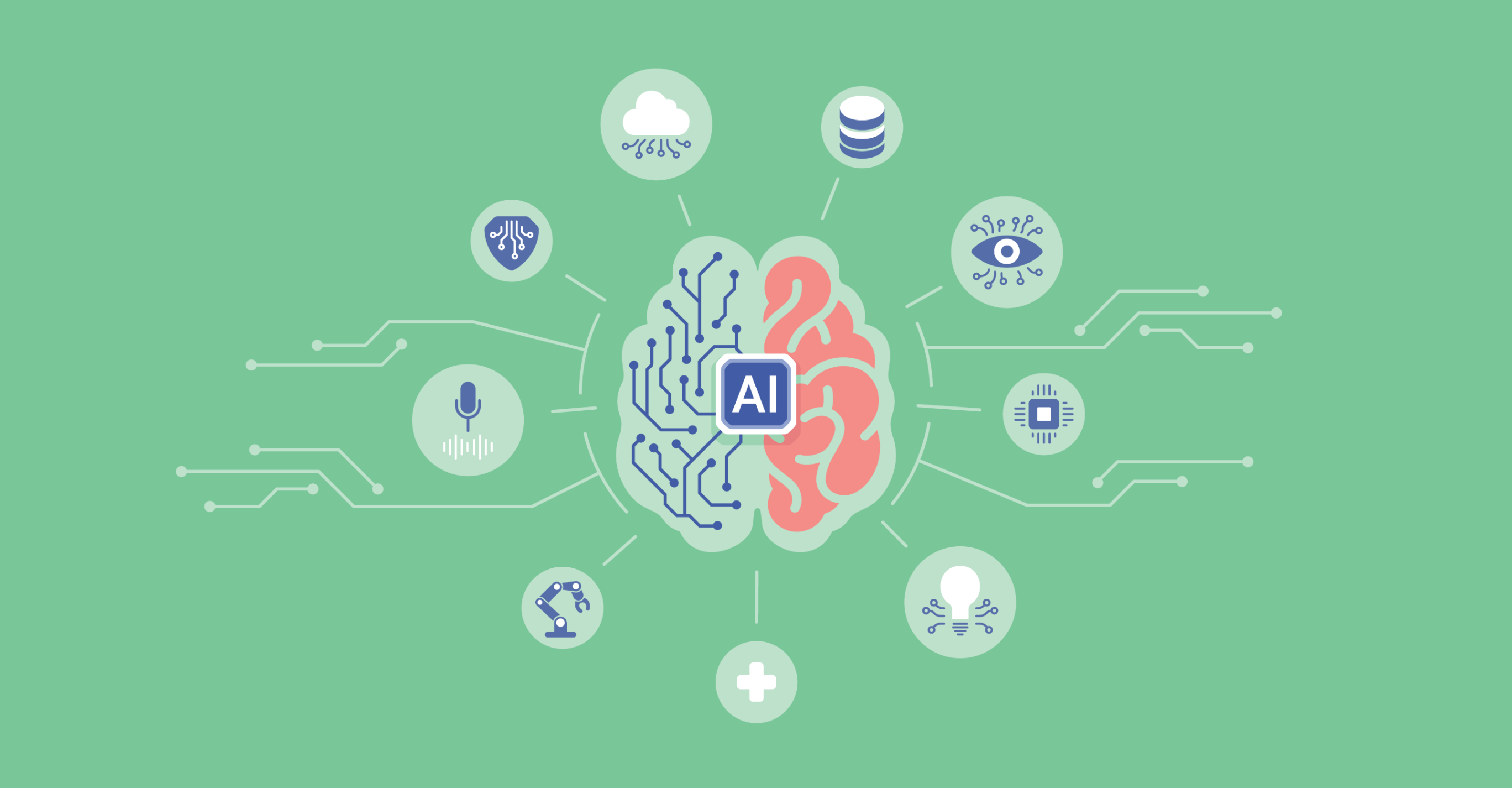Unlocking the Magic of Artificial intelligence
Artificial Intelligence, or AI, has become a buzzword in the tech world in recent years. From self-driving cars to virtual assistants, AI technology is revolutionizing the way we live and work. But how exactly does AI work? In this article, we will delve into the magic behind AI and explore the inner workings of this fascinating technology.

Image Source: codingdojo.com
At its core, AI is about using algorithms to enable machines to perform tasks that normally require human intelligence. This can include tasks such as understanding natural language, recognizing images, and making decisions based on data. The key to AI is machine learning, a subset of AI that focuses on teaching computers to learn from data.
Machine learning algorithms are designed to analyze and learn from large amounts of data in order to make predictions or decisions. These algorithms are often trained using labeled data, where the input data is paired with the correct output. Through this process, the algorithm learns to recognize patterns and make predictions based on new, unseen data.

Image Source: siemens-stiftung.org
One of the key techniques used in machine learning is neural networks. These networks are inspired by the way the human brain processes information, with interconnected nodes that pass information back and forth. By adjusting the strength of the connections between nodes, neural networks can learn to recognize complex patterns and make decisions.
Another important concept in AI is deep learning, a subset of machine learning that focuses on neural networks with multiple layers. Deep learning has been key to many recent breakthroughs in AI, such as image and speech recognition. By adding more layers to a neural network, deep learning algorithms can learn to represent data in increasingly complex ways.

Image Source: softwareplanetgroup.co.uk
But how does AI actually learn from data? The answer lies in the process of training the algorithm. During training, the algorithm is fed a large amount of data and adjusts its internal parameters to minimize the difference between its predictions and the correct output. This process is repeated many times, with the algorithm getting better at making accurate predictions each time.
Once the algorithm has been trained, it can be deployed to make predictions on new, unseen data. This is where the real magic of AI comes into play. By analyzing new data and making predictions based on its learned patterns, AI can help us make better decisions, automate tedious tasks, and even develop new technologies.
In conclusion, AI is a powerful technology that is reshaping the way we live and work. By using machine learning and neural networks, AI algorithms can learn from data and make predictions that would have been impossible for traditional computer programs. From self-driving cars to virtual assistants, AI is unlocking new possibilities and pushing the boundaries of what technology can achieve. So the next time you interact with an AI-powered device, remember the magic happening behind the scenes and marvel at the wonders of artificial intelligence.
The Brain Behind the Bytes
Have you ever wondered how your smartphone is able to recognize your voice commands, or how your email inbox can filter out spam messages so effectively? The answer lies in the incredible technology known as Artificial intelligence (AI). In this article, we will dive into the fascinating world of AI and explore the inner workings of the brain behind the bytes.
At its core, AI is all about creating intelligent machines that can think, learn, and problem-solve just like humans. One of the key components of AI is machine learning, a subset of AI that focuses on giving computers the ability to learn from data without being explicitly programmed. This is where the brain of AI comes into play.
The brain of AI is made up of complex algorithms that allow machines to analyze data, recognize patterns, and make decisions based on that information. These algorithms are designed to mimic the way the human brain processes information, allowing machines to learn from experience and improve their performance over time.
One of the most powerful tools in the AI toolbox is neural networks, which are designed to mimic the way the human brain processes information. Neural networks consist of interconnected nodes, or neurons, that work together to process and analyze data. By training these neural networks on vast amounts of data, machines can learn to recognize patterns and make predictions with incredible accuracy.
But the brain of AI goes beyond just neural networks. Deep learning, a subset of machine learning, takes this concept to the next level by using multiple layers of interconnected neurons to process data. This allows machines to perform complex tasks such as image recognition, speech recognition, and natural language processing with remarkable accuracy.
The key to the success of AI lies in the training data. Just like how humans learn from experience, machines learn from vast amounts of data that is fed into the algorithms. This training data allows machines to recognize patterns and make predictions with a high degree of accuracy, making them incredibly powerful tools for a wide range of applications.
In the world of AI, there are two main types of learning: supervised learning and unsupervised learning. Supervised learning involves training a machine on labeled data, where the correct answers are provided, allowing the machine to learn from its mistakes and improve its performance over time. Unsupervised learning, on the other hand, involves training a machine on unlabeled data, allowing it to identify patterns and relationships on its own.
The brain behind the bytes is constantly evolving and improving, thanks to advancements in technology and research. Researchers are always looking for new ways to improve the performance of AI algorithms, making them more powerful and efficient than ever before.
As we continue to unlock the mysteries of AI technology, the possibilities are endless. From self-driving cars to personalized recommendations, AI has the potential to revolutionize the way we live and work. So the next time you ask your smartphone for directions or receive a personalized recommendation on your favorite streaming service, remember the incredible brain behind the bytes that makes it all possible.
Diving into Deep Learning
Artificial intelligence, or AI, is a fascinating field that has been rapidly advancing in recent years. One of the key concepts within AI is deep learning, which has been instrumental in many of the recent breakthroughs in AI technology. In this article, we will delve into the world of deep learning and explore how it works within the broader scope of AI technology.
Deep learning is a subset of machine learning, which itself is a subset of AI. It is based on the idea of neural networks, which are computer systems modeled after the human brain. These neural networks consist of layers of interconnected nodes, or artificial neurons, which process information in a way that mimics the way the human brain processes information.
The key to deep learning is the use of multiple layers of nodes, hence the term deep learning. These layers allow the neural network to learn increasingly complex patterns and relationships within the data it is being trained on. This is in contrast to traditional machine learning algorithms, which may only have one or two layers of nodes.
One of the key benefits of deep learning is its ability to automatically discover and learn features from the data it is provided with. This is in contrast to traditional machine learning algorithms, which require human experts to manually identify and extract features from the data. This makes deep learning particularly well-suited for tasks such as image recognition, speech recognition, and natural language processing.
In order for a deep learning model to learn from data, it must first be trained on a large dataset. During the training process, the model is presented with labeled examples of the data it will be working with. For example, in the case of image recognition, the model may be given thousands of labeled images of different objects. The model then learns to associate certain features of the images with the labels, allowing it to identify objects in new, unseen images.
Once the model has been trained, it can then be used to make predictions on new, unseen data. This is known as the inference stage. During the inference stage, the model takes in new data and uses the patterns it has learned during training to make predictions or classifications.
Despite its many benefits, deep learning does have its limitations. One of the main challenges with deep learning is the need for large amounts of labeled data for training. Gathering and labeling such data can be time-consuming and expensive, making it a barrier for many organizations looking to implement deep learning models.
Another challenge is the black box nature of deep learning models. Because of the complex and layered nature of neural networks, it can be difficult to interpret how a deep learning model arrived at a particular decision. This lack of transparency can be a significant concern, especially in applications where decisions need to be explainable or where biases need to be identified and mitigated.
Despite these challenges, deep learning continues to be at the forefront of AI research and development. Advances in deep learning have led to breakthroughs in a wide range of applications, from self-driving cars to medical diagnostics to natural language understanding.
In conclusion, deep learning is a powerful tool within the field of AI technology. By using neural networks with multiple layers of interconnected nodes, deep learning models are able to automatically learn and extract complex patterns and relationships from data. While there are challenges and limitations to be aware of, the potential of deep learning to revolutionize AI technology is truly exciting.
Demystifying AI Technology
Artificial intelligence, or AI, is a rapidly evolving technology that is becoming increasingly integrated into our daily lives. From Chatbots and virtual assistants to self-driving cars and personalized recommendations, AI is revolutionizing the way we interact with technology. However, for many people, the inner workings of AI can seem like a complex and mysterious black box. In this article, we will demystify AI technology and provide a simple guide to understanding how it works.
At its core, AI is the simulation of human intelligence processes by machines, particularly computer systems. This includes learning, reasoning, problem-solving, perception, and language understanding. Machine learning, a subset of AI, enables machines to learn from data and improve their performance over time without being explicitly programmed. This is achieved through algorithms that analyze and interpret data, identify patterns, and make decisions based on that data.
One of the key components of AI technology is neural networks, which are modeled after the human brain. These networks consist of layers of interconnected nodes, or artificial neurons, that process and transmit information. Deep learning, a type of machine learning that uses neural networks with multiple layers, has been particularly successful in tasks such as image and speech recognition.
Another important concept in AI technology is natural language processing (NLP), which enables machines to understand and generate human language. This is essential for applications such as chatbots, virtual assistants, and language translation services. NLP algorithms analyze text and speech, extracting meaning and context to generate appropriate responses.
Reinforcement learning is another key aspect of AI technology, where machines learn through trial and error. By receiving feedback in the form of rewards or penalties, the machine adjusts its actions to achieve a desired outcome. This is the basis for training algorithms in tasks such as playing games or controlling autonomous vehicles.
AI technology also encompasses computer vision, which allows machines to interpret and understand visual information. This is crucial for applications such as facial recognition, object detection, and autonomous driving. By analyzing and processing images and videos, machines can make decisions and take actions based on visual input.
One of the challenges in AI technology is ensuring that machines make ethical and unbiased decisions. Bias can be inadvertently introduced into AI systems through the data used to train them, leading to discriminatory outcomes. It is important for developers and researchers to address these issues and strive for fairness and transparency in AI algorithms.
As AI technology continues to advance, it is important for us to understand how it works and the potential impact it can have on society. By demystifying AI technology and breaking down complex concepts into simple terms, we can all gain a better understanding of this transformative technology. Whether it’s improving healthcare, enhancing customer service, or driving innovation in industries, AI has the potential to revolutionize the way we live and work. So embrace the magic of AI technology and get ready to unlock a world of possibilities.
how does artificial intelligence work